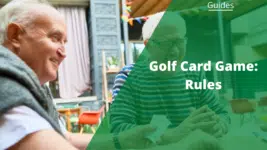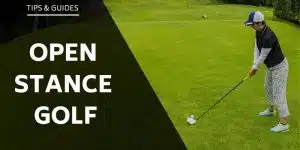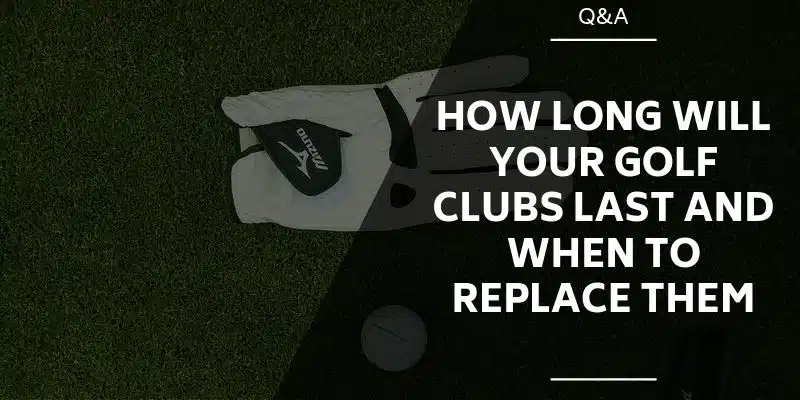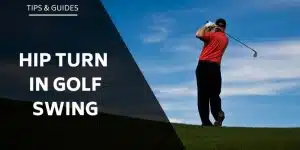Do you ever feel like your stroke is consistent, but you struggle to get a consistent outcome?
Well, your golf ball placement may well be to blame! It’s an element many golfers overlook that makes the already challenging game of golf a lot harder to play.
This write-up explains all there is to know about golf ball stance placement, detailing the differences between each club and even changes you might want to make for specific shots. We’ve also produced a useful golf ball position chart for quick reference.
Proper Golf Ball Position Chart
Here is a Printable Golf Ball Position for Every Club to give you the ball placement in your golf stance for each club in your arsenal.
Golf Ball Positions — Key Info
Before we go onto specific club usage, it’s important to quickly outline some terms relating to the ball position in your golf stance. We will use these to explain every setup. They are straightforward, but we still want to describe them to avoid confusion.
- Front foot: This is your leading foot when you take your stance. If you’re right-footed, it will be your left foot; if you’re left-footed, it’s your right.
- Centerline: An imaginary line equidistant between your leading and trailing foot.
- Back foot: This is your trailing leg when you take your stance. If you’re right-footed, it is your right foot, and if you’re left-footed, it is your left foot.
Read More: Open Stance Golf Swing
Golf Ball Position for Drivers

The ball placement for the driver is probably what you are most familiar with. It’s very easy to tell if you have a poor setup because it feels awkward, and you won’t hit the ball cleanly.
Ball placement for drivers is the furthest forward of any golf club. This is because we want to hit the ball late in our swing motion when we generate high swing speed levels.
We also want to strike the ball as the club is coming up, not down. As such, the ball goes just behind your front foot.
Golf Ball Position for Woods & Hybrids
Moving in a little from the driver, we have the woods and hybrids. As with the driver, you strike the ball upwards with woods, but not quite as late. Therefore your golf ball position is around two ball widths in front of the center line.
However, for the higher woods, you may want to move the ball a little closer to the center line. As for hybrids, the ball position is around the same at two ball widths in front of the center line. Yet there is one key difference: you have to strike down on the ball like when you use an iron rather than up on the ball as for a hybrid.
Some players may struggle with the position here, and if that’s you, we recommend moving your ball a little closer to the center line. This will make it much easier to strike downwards on the ball as it occurs earlier in the stroke.
Golf Ball Position for Irons

Irons have the greatest ball placement variation of any club. This is because they come in many different lengths. You may have sensed a trend by now that the longer the club, the further you place the ball forward. Using this philosophy, we can select placements for irons.
For your long 3-4 irons, you place the ball exactly like your hybrids and fairway woods. That’s two ball widths in front of the center line.
For your mid-length irons, position the ball slightly forward, around one ball’s width in front of the center line.
And finally, for long irons, you place the ball on the center line.
Of course, these are just general rules, and you may want to make small adjustments to cater to your preferences. Take note of the loft of each of your clubs, as this will help you decide where to place the ball. The greater the loft, the closer to your back foot the ball goes.
Golf Ball Position for Wedges

You hit wedges further back than any club, but they may be around the same as your 8-9 irons and putters, depending on the type of shot you are trying to play.
At their core, wedges are designed to get plenty of height on the ball. This means hitting the ball in the downward portion of your stroke and somewhat scooping the ball off of the ground.
There are four types of wedges, and you likely won’t have all of them in your bag. There is the pitching wedge, the gap wedge, the sand wedge, and the lob wedge. The pitching wedge has the least amount of loft at around 45-48 degrees. And as the name suggests, the lob wedge has the most loft at around 58-60 degrees.
As the pitching wedge has the least loft, the ball should be the furthest forward. Around the center line is a good ball placement for this club. However, as the lob wedge has much more loft, you may want to experiment with placing it closer to your back foot.
Golf Ball Position for Putters

Golf ball placement for putters is probably the most debated position of any golf club, as what benefits one play may not benefit another. However, we are talking about micro-adjustments, very small changes that you shouldn’t overthink.
It is largely agreed that the optimal ball position for a putter is somewhere around the center line. Some golfers place it ever so slightly forward, closer to the front foot. This may help with getting smooth contact for a nice roll. Ultimately though, you should experiment a little to see what works for you. But remember, only make small adjustments here. If you move the ball too far forward or backward, it will hurt your game.
Read More: Closed Stance Golf Swings
Golf Ball Placement for Specific Shots
Although we’ve outlined the general stance for each golf club, there are particular shots you might want to play which may break these rules. Here are a few:
- Bump n run: Played with the short iron, this type of chip travels along the ground. We recommend placing the ball slightly closer to your back foot.
- Chip: A chip shot is much like a bump n run. It doesn’t spend much time in the air, but it doesn’t travel along the ground quite as much as the bump n run. Place the ball similarly to the bump n run slightly closer to your back foot.
- Fairway bunker: Unlike usual wedge shots where you strike downward on the ball, for fairway bunker shots, you want a more open clubface so that the sole makes contact with the sand first. Position the ball a little in front of the center line.
- Flop shot: A flop shot is a soft and high shot that stops abruptly when it lands on the green. Position the ball between your front foot and the center line.
- Greenside bunker: These have a similar position to fairway bunker shots: a little in front of the center line.
- Punch: A great shot to combat overhanging trees or windy weather. Place the ball close to your back foot. It should certainly be no further forward than the center line.
- Stinger: Made famous by Tiger Woods, the stinger is a lot like the punch shot. The stinger keeps the ball low. Place it slightly forward of the center line.
More Stance Tips
Now that we’ve covered the stances for all of your clubs and any shots you might want to perform, I just want to leave you with some general tips that are handy to keep in mind.
Firstly, you just need to remember that the higher the loft, and the shorter the club, the closer to your back foot you position the ball. Of course, this isn’t always true, but most of the time, it is. You should find that the center line is a great position for the shorter clubs in your bag from the short irons to the wedges.
Furthermore, the longer your club, the further away you stand from the ball. You’ll constantly be ripping up the turf if you stand too close. S for the likes of a driver, position the ball the furthest away from you, and as you work your way down to the shorter clubs, position the ball closer to you.
FAQs
Where Should the Ball Be Placed if It Is On a Slope?
When the ball is on a slope, you position it closer to your front foot. As for your stroke, you keep it the same as you usually wood.
Where Should the Ball Be Positioned in Your Stance When in the Bunker?
You should place the ball a little in front of the center line for bunker shots. This helps you hit the ball with an open club face.
What Are the Signs That My Ball Positioning Is Incorrect?
If your ball positioning is incorrect, it will present itself in the outcome of your shots. Thin shots, fat shots, bladed shots, and shanks are all evidence of poor ball positioning.
Final Thoughts
Getting your golf ball and club position right is no easy task, and we’ve all been guilty of getting it wrong at some point. But hopefully, now, with the info in this article, you better understand the general rules of ball placement. This means you can focus on the harder part of golf, developing a good swing!
If you’re struggling to take in any information, just refer to the golf ball position chart at the top of the page. It provides a quick and easy reference for all of your clubs. In time, you could even make your own golf ball placement chart to reflect your favored ball positions.
Alex’s routes in sports began with football and now mostly focuses on ping pong and golf. Alex loves the strategy and is always looking for a competitive edge. This is what drove him to write strategy guides and product reviews. He takes great pride in spreading his knowledge and loves to coach fellow players. You can connect with him on LinkedIn, IG, FB, or alexhorscroftwriting@gmail.com.








